Lawyers Find Wellness Through Art, Craft and Creativity
The law is often regarded as being rigid, exacting, and demanding, whereas art is thought to be loose and free. Lawyers and artists seem to be on opposite sides of the spectrum; however, artistic lawyers are finding balance and wellness combining the two disciplines. In art, the transformation the artist undergoes during the creative process has a benefit unto its own. The process of creating art comes from deep within the artist’s soul, rising up through experiences, memories, cherished moments, and beyond, forming in a medium appreciated by both the artist and the viewer. The power with which art can positively affect the human psyche is undeniably strong. Understanding this as an artist and a lawyer, I created the inaugural Contra Costa County Bar Association Virtual Art Show to display works of art made by artistic lawyers to demonstrate how creativity can add value beyond measure in a lawyer’s life and practice.
The legal profession is one of the most rewarding professions in the world; however, it is equally fast-paced, high-stress, and arduous, often leading to burnout, depression, anxiety, addiction or a combination of these concerning outcomes. In a study conducted in 2016, a substantial number of attorneys experienced behavioral health problems and symptoms of depression (28%), anxiety (19%), stress (23%), and alcohol related dependency (20.6%).[1] These statistics are concerning, considering lawyers have duties to provide competent representation and diligence to their clients, as well as duties to non-clients.[2] Given the disturbing statistics on mental health and addiction, and their likely impact on lawyers’ abilities to fulfill their ethical duties, the need for attorney wellness is not to be taken lightly, nor is it to be ignored.
Creative therapy could be utilized to combat and alleviate the mental toll that lawyers experience by providing an outlet for stress relief. There are various creative therapies such as music engagement, movement-based creative expression, and expressive writing. The CCCBA’s Visual Art Show focused on visual art therapy. “There is evidence that engagement with artistic activities, either as an observer of the creative efforts of others or as an initiator of one’s own creative efforts, can enhance one’s moods, emotions, and other psychological states as well as have a salient impact on important physiological parameters.”[3] Art therapy is a recognized modality of integrative mental health that is facilitated by a board-certified art therapist through active art-making, creative process, applied psychological theory, and human experience within a psychotherapeutic relationship.[4] By engaging the mind, body, and spirit in ways that are distinct from verbal articulation alone, art therapy is used to improve cognitive and sensory-motor functions, foster self-esteem, cultivate emotional resilience, promote insight, enhance social skills, resolve conflicts, reduce distress, and advance societal change.[5]
The CCCBA Visual Art Show provided a fantastic opportunity for artistic attorneys to share how they use creative expression to foster and develop wellness. The participants included Julie Ann Giammona, Marc Bouret, Qiana Washington, Mary Grace Guzman, and myself. Each artistic lawyer had the ability to present their works of art, explain their artistic journey and inspirations, and their process. The presenters elaborated on the creative aspects that brought them joy, while attendees were encouraged to engage in discussion.
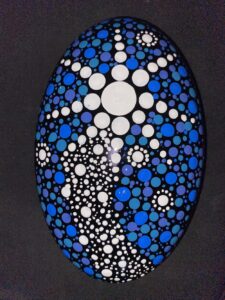
Julie Ann Giammona, labor and employment attorney at Ferber Law PC, shared her “Dot Rock Art” which she created by pouring acrylic into molds, and subsequently painting the rocks using a dot technique that created beautiful intricate designs. Giammona also shared her love of floral arranging as another form of her creativity. As a child, she was told she was not artistic by a teacher, which had a lasting negative effect, and led her to shy away from artistic activities throughout her life. Fortunately, as an adult she rekindled her creativity, valuing the process just as much as the resultant work of art.
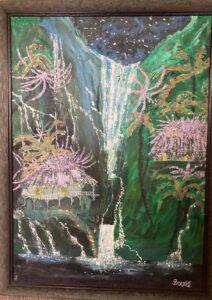
Award-winning oil painter, Marc Bouret, mediator at Bouret ADR & Mediation Firm, draws inspiration from his travels and memorable life moments. Bouret began painting later in life after taking several classes, and has found passion for the artistic medium – mixing vivid colors with scenic subject matter, combined with an impressionistic style reminiscent of many of the great masters. He shared a sweet painting of his wife in Venice, Italy, which he declined to sell for sentimental reasons.
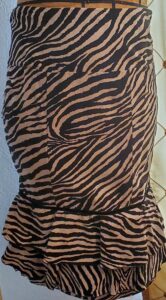
Fashion designer Qiana Washington, criminal defense attorney at Washington & Associates, creates elegantly tailored opera gowns, coats, and suits, gathering inspiration from various sources including television characters like “Rachel” on Friends. She shared how she sketches each design, creates a pattern and prototype, then sews the final garment to her specifications. The time, skill, and detail put into each garment creates a work of art, with little resemblance to fast-fashion found in big-box retailers. Washington recalls her grandmother’s influence on her passion for clothing design, reminding us that historically, cultures passed skills down from one generation to the next, thereby creating a living heritage.
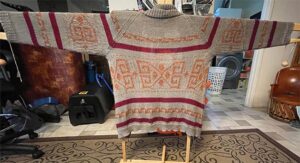
Knitter Mary Grace Guzman, ethics and professional responsibility attorney at Guzman Legal Solutions, walked the audience through the process of creating a merino wool sweater that she knitted in the traditional Fair Isle style, adding her own flair by using bright colors and a skull motif. Guzman learned how to knit from a former boss and cited her embroiderer grandmother as a source of inspiration. She finds knitting to be relaxing, calming, and meditative, greatly helping her handle the stress of running her law practice.
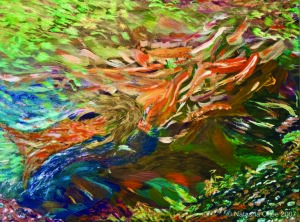
Natasha Chee, I am an entertainment, video game, and tech attorney with my own firm who loves working in various mediums including painting, photography, ceramics, and knitting, as a way of expressing my creativity. These activities allow my brain to enter a state of flow whereby I completely immerse myself in my art. I often flip the canvas painting multi-directionally, using brushes and palette knives to create texture and evoke emotions in the resultant artwork. I utilize photography as a way of transforming a moment into a dream-like state of abstractionism, whereas knitting and ceramics are more meditative, tactile, and organic methods of creating something beautiful. My inspirations come from anything experienced in the world, whether it be a memory, a dream, a film, a song, an artist that I admire, or an abstract idea. I was fortunate to be raised in an artistic family where art was discussed, valued, and celebrated as a way of life.
Art and the creative process can help lawyers achieve a more balanced life, in addition to greater feelings of satisfaction, calm, and well-being. As lawyers lead increasingly stressful, over extended, fast-paced lifestyles, creating art and flow may be a refreshing way to heal and reset your life. Pick any artistic medium that speaks to you, release your mind, and find all the ways the creative process may be just what the doctor ordered!
[1] Krill, et al. “The Prevalence of Substance Use and Other Mental Health Concerns Among American Attorneys.” Journal of Addiction Medicine, vol. 10, issue 1, Jan./Feb. 2016, pp. 46-52, https://journals.lww.com/journaladdictionmedicine/Fulltext/2016/02000/The_Prevalence_of_Substance_U se_and_Other_Mental.8.aspx. Accessed 22 Mar. 2021.
[2] ABA Model Rules of Professional Conduct, Rules 1.1, 1.3 and 4.1-4.4.
[3] Stuckey, et al. “The Connection Between Art, Healing, and Public Health: A Review of Current Literature.” Am. J. Public Health, vol. 100(2), Feb. 2010, pp. 254-263, https://www.ncbi.nlm.nih.gov/pmc/articles/PMC2804629/. Accessed 23 March 2021.
[4] See https://arttherapy.org/about-art-therapy/.
[5] See Id.